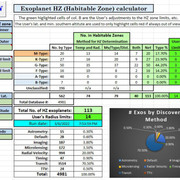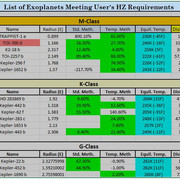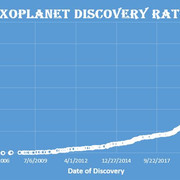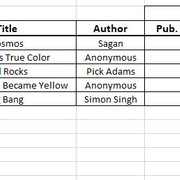It might be nice to have a thread on the latest exoplanet data presentations.
Here is the current results I've found. [This, admttedly, is as much about having fun in VBA coding as in seeing where we are with exoplanets.]
There are about 136 exoplanets in the habitable zone. 3 of these have a mass < 1.9 Earth masses, but > 0.5 Earth masses.
Notice the HZ range is bumped by 3.9%. This is a result of today's article here, where an 8% luminosity change would allow a planet with less water to not freeze, etc. The 3.9% is the distance for 8%, in accord with the inverse square law.
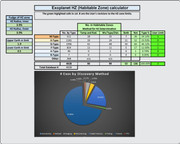


Here is the current results I've found. [This, admttedly, is as much about having fun in VBA coding as in seeing where we are with exoplanets.]
There are about 136 exoplanets in the habitable zone. 3 of these have a mass < 1.9 Earth masses, but > 0.5 Earth masses.
Notice the HZ range is bumped by 3.9%. This is a result of today's article here, where an 8% luminosity change would allow a planet with less water to not freeze, etc. The 3.9% is the distance for 8%, in accord with the inverse square law.





